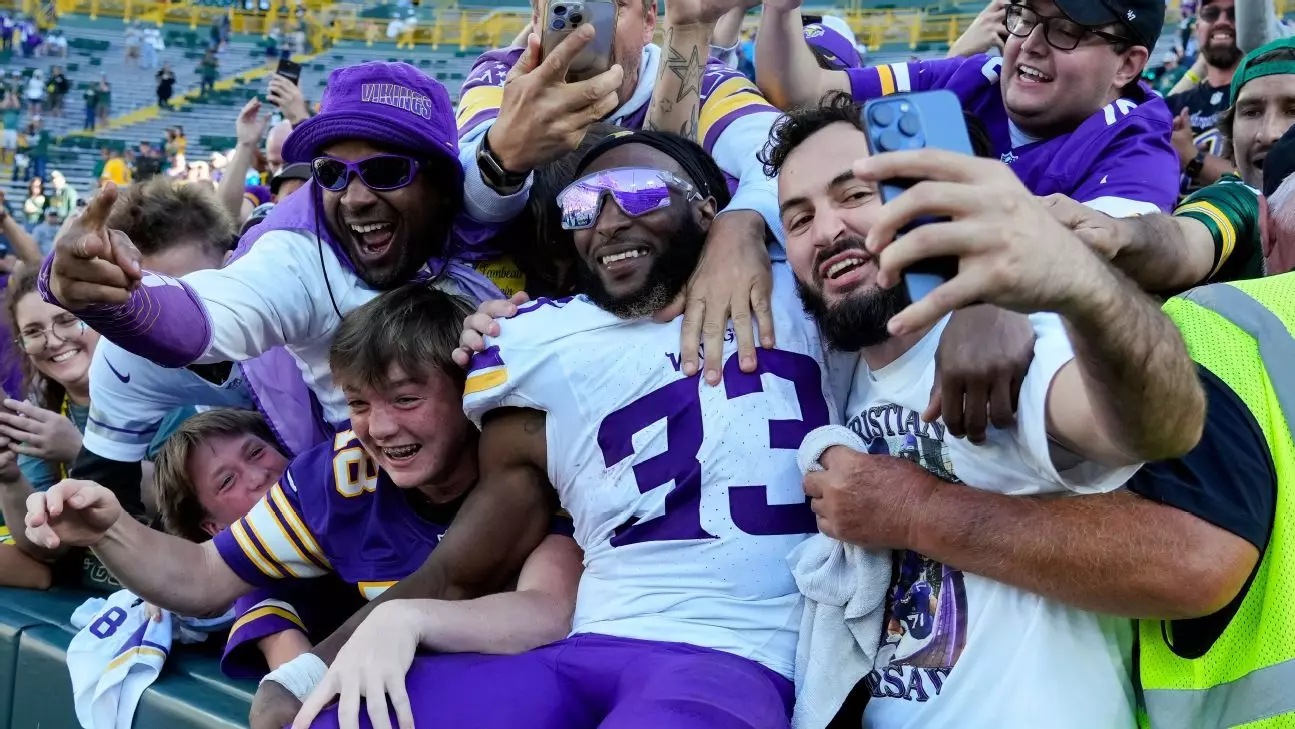As the Minnesota Vikings navigate the complexities of their backfield this offseason, it has become increasingly evident that changes are on the horizon. The team appears keen to avoid replicating the heavy reliance on veteran running back Aaron Jones, who, despite his impressive 2024 season, seems destined for a different role if he re-signs. Jones had a standout season, achieving career highs in touches, carries, and offensive snaps, while also dealing with a host of injuries. His performance was marked by 1,138 rushing yards and a significant total of scrimmage yards, but the Vikings’ coaching staff is signaling a need for more balance within the backfield, aiming to decrease his workload in favor of a more sustainable approach.
Coach Kevin O’Connell’s comments about Jones reflect this transition. He praised Jones’s capacity as a feature back but also hinted at the necessity of integrating younger talent into the mix alongside him. This notion of a backfield by committee emphasizes a growing trend in the NFL, where teams are increasingly valuing running back rotations for durability and performance efficacy. The Vikings are not only considering a return for Jones but also contemplating the selection of a new running back through the draft, indicating a strategic pivot.
The Vikings’ season opener against the New York Giants illustrated this delicate balancing act quite well. In this game, Jones performed admirably as the lead back, but the distribution of carries indicates a desire to share the offensive load. Backup Ta Chandler saw considerable action, suggesting that the coaching staff wished to cultivate a dual-threat approach to the running game early in the season. However, as the year progressed, Chandler’s contributions dwindled, leading to Jones assuming a more prominent role once the team acquired Cam Akers as a secondary option.
This evolution raises critical questions about the Vikings’ running game strategy moving forward. With an array of injuries to key players, reliance on any one individual can be detrimental in the long run. Jones’s ability to thrive in a committee could prolong his career and lessen the wear and tear on his body. The Vikings’ recent history of utilizing youthful talent through the draft further underscores the urgency for depth, given the challenges surrounding player durability and the physical demands placed on running backs.
As the upcoming offseason unfolds, the Vikings find themselves amidst a crowded free-agent market. Veteran options like Najee Harris and J.K. Dobbins will vie for attention alongside Jones, which may lead to strategic decisions concerning how to allocate resources. Furthermore, the looming NFL Draft presents an array of talented collegiate running backs, each vying for NFL roles. Names such as Ashton Jeanty and TreVeyon Henderson are generating buzz, potentially enticing the Vikings to bolster their roster through the draft instead of solely depending on free agents.
However, the Vikings’ unique position—having the least draft capital among NFL teams—complicates their strategy. Decisions will need to be made judiciously, prioritizing the most critical needs of the team while also considering how best to enhance the backfield. The defensive side of the ball also requires attention, particularly in light of several cornerbacks and safeties entering free agency. This realization urges team executives to maintain a balanced focus on both sides of the ball while ensuring the running game does not fall by the wayside.
Since Coach O’Connell’s arrival, a significant philosophical shift has taken place within the Vikings’ offense, focusing predominantly on developing star receiver Justin Jefferson. While the passing game flourished, the ground attack remained an afterthought, with the team frequently ranking low in designed run plays over the last few seasons. Yet, as the 2024 season illustrated, there is a crucial need for balance, particularly with the transition from Kirk Cousins as quarterback to newer player J.J. McCarthy.
Integrating Jones back into a modified running scheme, along with the potential drafting of a rookie back, could represent a turning point for the Vikings. If they succeed in achieving offensive balance, the team stands to benefit in the long run, easing pressure off their quarterbacks and lending a formidable ground game essential for a competitive edge in the league.
The Vikings face a significant juncture in determining the future of their backfield. With an emphasis on rotations, drafting potential, and evolving their offensive capabilities, the upcoming months will prove critical in defining their direction. The anticipated decisions surrounding Aaron Jones and the determination of the running game offer a glimpse into the broader evolution of the Minnesota Vikings.


Leave a Reply